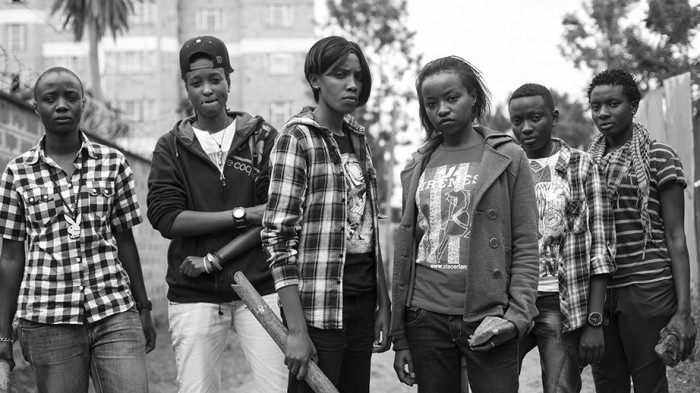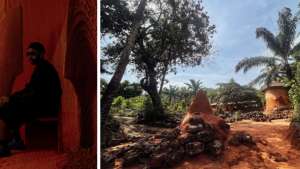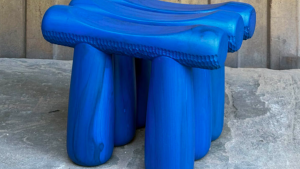
The stories that are told in the feature film The Stories of Our Lives, showing as part of Design Indaba FilmFest 2015, are only one part of what makes this film about the lives of lesbian, gay, bisexual, transgender and intersex (LGBTI) people living in Kenya remarkable. The team behind it, led by Nairobi-based alternative arts group The Nest, faced threats to their personal safety, social prejudice and even arrest while making it.
The film is an anthology of five short films dramatising true stories of LGBTI life in Kenya, where homosexuality is criminalised under Kenyan law and gay experience is either ignored or vilified in the media.
We wanted to tell stories that are not often heard, stories that characterise the queer experience in Kenya, the collective writes on its website.
The film is directed by Jim Chuchu, co-founder and creative director of The Nest, and written by Chuchu and Njoki Ngumi, its outreach and partnerships coordinator. Together with the larger team, they worked on a shoestring budget with one small video camera, two LED lights, a portable digital recorder and a shotgun mic to film, edit and produce the feature over eight months.
The film is banned in Kenya but has been hailed for its compelling storytelling by international platforms such as the Toronto International Film Festival (TIFF), where it premiered to a standing ovation. A month later, in October 2014, one of the film’s executive directors, George Gachara, was arrested by Kenyan police for shooting the film without a licence from the country’s Department of Film Services, in contravention of the Film and Stage Plays Act.
Here the team tells us how the project began, why they decided to go public with their identities and how they worked as a collaborative team.
This movie had its origins in The Stories Of Our Lives project. Why did you feel it was important to document the stories of LGBTI individuals?
The true stories of the Kenyan queer experience are seldom heard, and by “true”, we mean stories of love, and family, and hope, and difficulty - stories that all human beings share. The narratives that have so often taken centre stage include the pathologised NGO tales that can depict the homosexual person only as a vector of disease, or hyper-sensationalised media reports and outing people to stir up scandal. There is also the political side of things, where the LGBTI community members are used as convenient scapegoats and indicators of immorality, so that the “purge them from amongst you” solution is peddled, like witchcraft, to cleanse society and government of systemic problems. Then there is the religious narrative, globally homophobic for millenia, which joins in with the labelling of alternative sexual orientations and gender diversities as imports of the West. These struggles are shared by the LGBTI communities in many African countries.
In the face of all these things, it is essential to hear the voices of the African community telling their own stories as people, and so reclaim the dignity, agency and personhood that all these other narratives have taken away. It’s pretty basic – that LGBTI people are people. The other thing that is priceless is the knowledge that one is not alone; it is common among queer people to feel very isolated, and every single documentation project serves to help us see ourselves in others.
What patterns became apparent among the stories that you collected?
We had an absolute spectrum of answers with every question we had, so even a pattern cannot speak for the majority. We noticed that many LGBTI youth have difficult experiences especially in high school, and suffer interrupted educational paths in that regard. The lines between friends and family often blur as well because many people who are rejected at home find social acceptance and a new concept of home with their friends.
Can you share one or two with us that made a deep impression on you?
We were always incredibly touched by stories of families who accepted their LGBTI members whether immediately or with time, and there were a few of those. We also loved the dreams that were shared with us of what belonging meant to the people we talked to – whether to a home, to a relationship, to a partner, to a religion or to society – and the redefinitions of these ideas of belonging. Stories of kindness and compassion.
Initially you wanted to cast only LGBTI-identifying actors but you ultimately decided to open it up to all actors interested in playing the parts. What was behind your thinking?
We’ve known actors who publicly identify as heterosexual and have experienced real difficulty with overwhelming intrusiveness from media and the public after playing LGBTI characters. We didn’t want to be the initiators and catalysts of that experience for any artist. We also considered that there could be an authenticity to the role brought by LGBTI actors that maybe heterosexual ones would struggle with. We eventually decided to go with the actors that were willing to play the parts with as much truth and presence as possible, however they identified – if they chose to identify, that is, with any particular sexual orientation. We had long conversations with all of them about what this project could mean for all of us. When we did a private screening for the actors as part of post-production, they were asking when it would be screened for the public at a premiere and telling us to make sure there was a red carpet…! They are amazing, beautiful people.
Do you think the film will ever get an official screening in its home country?
As at now the film is banned in its current form, and with legal matters like these it can go several ways. The thing that is most important for us, though, is initiating and maintaining true, open dialogue and finding ways to keep sharing the beautiful, heartwarming stories we were given in many other forms. Our biggest regret is that the community we made the film for can’t watch it as at now.
What have people’s reactions been?
They’ve been mixed. We’re getting a lot of curiosity and regret, because Kenyans – like most people – don’t like being told what they can and can’t watch. We had a wonderful chat with Dr. Joyce Nyairo, a respected cultural analyst and academic, which resulted in a great article in the Daily Nation, a prominent newspaper here. Our partners and supporters have been great, and we are especially thankful to the amazing people at UHAI-EASHRI and HIVOS who, aside from chipping in with legal costs, always called to find out if we were safe and doing OK during some particularly stressful times. Support from some of our good friends globally has been key. We’ve of course had negative responses from many different fronts, but the most valuable thing for us has been the increasing openness to this essential conversation.
Can you give us an update on George Gachara after his arrest?
When the film was restricted, there was feedback from the classification people to other government departments and we found this out when a group of people from various offices showed up at our office to arrest George, the film’s executive producer. Our lawyer was able to get him out on bail, and the case against George is currently in court. We and our legal team are still figuring that path out as we go.
You chose to remain anonymous throughout the filming (only revealing your identities at the TIFF premiere). What was this like for you?
We realised that we and our cast could get into trouble for making this film and the anonymity was one way of trying to keep everyone as safe as possible. The people at TIFF, especially Rasha Salti, the wonderful programmer for Africa and the Middle East, were extremely supportive of that decision. After many conversations, we evolved our thoughts around the matter and opened up about it all. These were uncharted waters for all of us but even in the difficult moments, and there have been many, we’ve realised afresh what it means to be a community and family in practice.
This was The Nest’s first narrative feature. Any plans to do others at this stage?
Definitely! We love the way in which people so naturally identify with stories and characters and are excited to keep exploring that in many different ways.
The team behind the film is a ten-member crew with no formal training in filmmaking. But some of you have experience making commercials, music videos and fashion films, right?
None of us had entered the arena of film officially, even those with some experience with ads, fashion editorials and music. But we’ve always been almost irrationally DIY about everything, so maybe this just feeds into that.
You describe your approach as collaborative and non-hierarchical. What did this look like on set?
Jim [Chuchu], The Nest’s creative director, has always been deliberate about decentralising the bearing of artistic vision with all our projects, so we enter set knowing what we collectively want to get out of a shoot. At the same time, we consciously trust the individual knowledge and capacity of each crew member: the producer with production aspects, and the director of photography with image composition and execution, and the art department with aesthetic decisions, etc. We also make it a point to go into every job – not just our sets – to look out for each other, our audiences and our artists. So when we see issues affecting other departments, we speak up and we troubleshoot together. Also, we’re a small crew, so dialogue is made a lot easier.
Tell us about the process of filming – the ups and downs, whether the budget limitations forced you to try doing things differently and be creative, etc.
We generally drift towards the DIY approach, so the first thing we had to learn to do is how to outsource only what we absolutely had to. Our people were learning how to be crew on the go and that was pretty challenging. This mirrored the experiences of our wonderful cast members, because we always had a mixture of first timers and veterans on our sets. Of course, having more money to make decisions with is never a bad thing but it is not the only thing. The biggest lesson working with small budgets has taught us is to pick our priorities and stick with them, make everything else fit around that and never compromise on quality. We’ve been excited to see how that has worked so far.
"The Stories of Our Lives" is showing at The Labia as part of Design Indaba FilmFest 2015 on 24 February at 20:00. Book tickets and get more info on the other films being shown at the festival.






